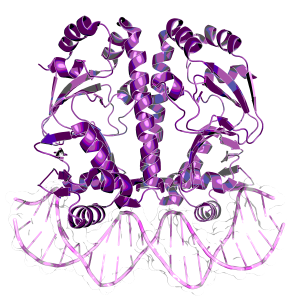Circular Dichroism
 Circular Dichroism (CD) measures the differences in absorption of circular polarised light. It is routinely used to measure the secondary and tertiary structure of proteins and nucleic acids. Analysis of proteins in the far UV region between 185-260nm allows differential absorption to be measured due to the chirality of the peptide bond alignment. Data obtained can be helical, beta sheet and random coil content of the protein. Analysis in the near UV region, between 250-320nm allows the measurement of contributions from aromatic amino acids residues provided they are held rigidly in an asymmetric environment. In other words if the aromatic residues are placed in a disordered region of the protein or the protein is in a molten globular state, these contributions will not be measurable by CD. Other protein chromophores and disulphide bonds can also contribute to protein CD spectra by virtue of their own chirality or induced chirality when bound to or present in the protein. Similarly, small molecule binding to proteins and nucleic acids can be measured using far UV 195-250nm.
Circular Dichroism (CD) measures the differences in absorption of circular polarised light. It is routinely used to measure the secondary and tertiary structure of proteins and nucleic acids. Analysis of proteins in the far UV region between 185-260nm allows differential absorption to be measured due to the chirality of the peptide bond alignment. Data obtained can be helical, beta sheet and random coil content of the protein. Analysis in the near UV region, between 250-320nm allows the measurement of contributions from aromatic amino acids residues provided they are held rigidly in an asymmetric environment. In other words if the aromatic residues are placed in a disordered region of the protein or the protein is in a molten globular state, these contributions will not be measurable by CD. Other protein chromophores and disulphide bonds can also contribute to protein CD spectra by virtue of their own chirality or induced chirality when bound to or present in the protein. Similarly, small molecule binding to proteins and nucleic acids can be measured using far UV 195-250nm.
Contact June Southall

